
Viking Names
Algarthorpe
Algarthorpe, in the Broxtow Wapentake of Nottinghamshire, comes from the Old Norse male personal name Álfgeirr the Old Norse element þorp ‘outlying farm, settlement’. Algarthorpe is a deserted medieval village near Basford, Nottinghamshire.
Read More
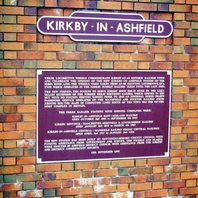
Viking Names
Kirkby in Ashfield
Kirkby in Ashfield, in the Broxtow Wapentake of Nottinghamshire, comes from Old Norse kirkja ‘a church’ and Old Norse bý ‘a farmstead, a village’. Ashfield is an old district name from Old English aesc ‘ash-tree’ and feld ‘open country, unencumbered ground’, though no mention of it has been found except in connection to Kirkby and Sutton in Ashfield, Nottinghamshire.
Read More
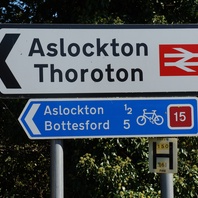
Viking Names
Thoroton
Thoroton, in the Bingham Wapentake of Nottinghamshire, comes from the Old Norse male personal name Þurferð and the Old English element tun ‘farm, settlement’. It is thus a hybrid name, like others nearby, such as Aslockton and Colston Bassett. The Thoroton Society, Nottinghamshire’s principal historical and archaeological society, takes its name from Dr Robert Thoroton who, in 1677, published the first history of the county. He in turn (or rather one of his ancestors) presumably took his name from the village.
Read More
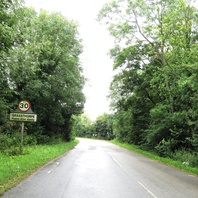
Viking Names
Grassthorpe
Grassthorpe in the Thurgarton Wapentake of Nottinghamshire is an Old Norse compound from gres ‘grass’ (which could also be Old English) and þorp ‘a secondary settlement, a dependent outlying farmstead or hamlet’.
Read More
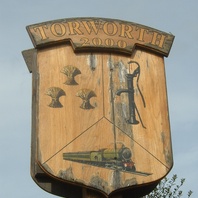
Viking Names
Torworth
Torworth, in the Bassetlaw Wapentake of Nottinghamshire, comes from the Old Norse male personal name Þórðr and the Old English element worð ‘enclosure’.
Read More

Viking Names
Sookholme
Sookholme, in the Bassetlaw Wapentake of Nottinghamshire, lies in a river valley and the etymology of the name reflects its location. The first element is Old English sulh ‘a plough; a ploughland (i.e. the amount of land which can be cultivated with one plough)’ which is combined with the second element, Old Norse holmr ‘an island, an inland promontory, raised ground in marsh, a river-meadow’. Thus it is a hybrid name with the probable meaning of ‘gully island’.
Read More
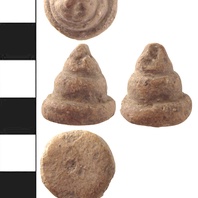
Viking Objects
Cast Lead Weight (SWYOR-A48576)
A cast lead-alloy weight or possible gaming piece in the form of a cone made of three levels. It is perhaps an indicator of the Scandinavian bullion economy. Weights are an important form of evidence for Viking Age commerce and the use of standards across the different economic systems within which Vikings were integrated. Many of the weights discovered, particularly ones in Ireland and those of Arabic type, suggest that a standardized system of weights existed in some areas. These standard weights, alongside standard values of silver, are what allowed the bullion economy of Viking occupied areas to function. A bullion economy was a barter economy that relied on the exchange of set amounts of precious metal in various forms, such as arm-rings or coins, for tradable goods, such as food or textiles. Each merchant would have brought their own set of weights and scales to a transaction to make sure that the trade was conducted fairly.
Read More
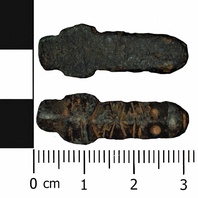
Viking Objects
Zoomorphic Strap-End (LANCUM-E11AB2)
This Thomas Class B, Type 4 strap-end has a pointed zoomorphic terminal moulded to represent an animal head with large semi-circular eyes and ears in Trewhiddle style. There are possible traces of niello in the recesses. .
Read More
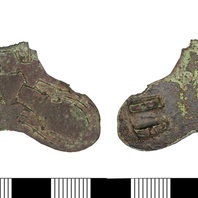
Viking Objects
Trefoil Brooch (LEIC-33DBDC)
Trefoil brooches were characteristically Scandinavian women’s wear. However, many examples found in the East Midlands were probably made in the Danelaw, and may have been copies of Scandinavian styles, instead of being imported from Scandinavia. The presence of Borre-style interlace on this example classifies it as Maixner’s type E. For more information on Scandinavian jewellery in England check out our blog: Brooches, Pendants and Pins: Scandinavian Dress Accessories in England.
Read More
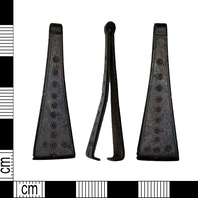
Viking Objects
Copper-Alloy Tweezers (LEIC-F41656)
A pair of copper-alloy tweezers found in Bassetlaw, Nottinghamshire. These feature a ring-and-dot stamped pattern with a tube at one end to accommodate a suspension loop. They would have been carried suspended from a brooch or belt. Tweezers were common personal items that people would have carried with them. They could be highly decorated.
Read More
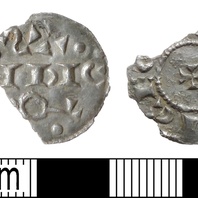
Viking Objects
Viking Silver Penny (DENO-7A0AF7)
An incomplete silver early medieval penny of the Vikings possibly minted in the name of Sihtric and imitating swordless St Peter Two-Line Type coins which were minted in York, c.905-920. Sihtric Caoch was the Scandinavian ruler of Dublin from 917-920 CE and subsequently the ruler of Northumbria from 921-927 CE. It is not certain why he left Ireland. The Irish annals state that it was ‘through the grace of God’ and do not elaborate on the politics behind his departure. After the establishment of the Danelaw, some Viking leaders decided to mint their own coins to solidify their legitimacy in the eyes of the local populace. This created a hybrid economy where some members of the Danelaw used bullion and others used coins.
